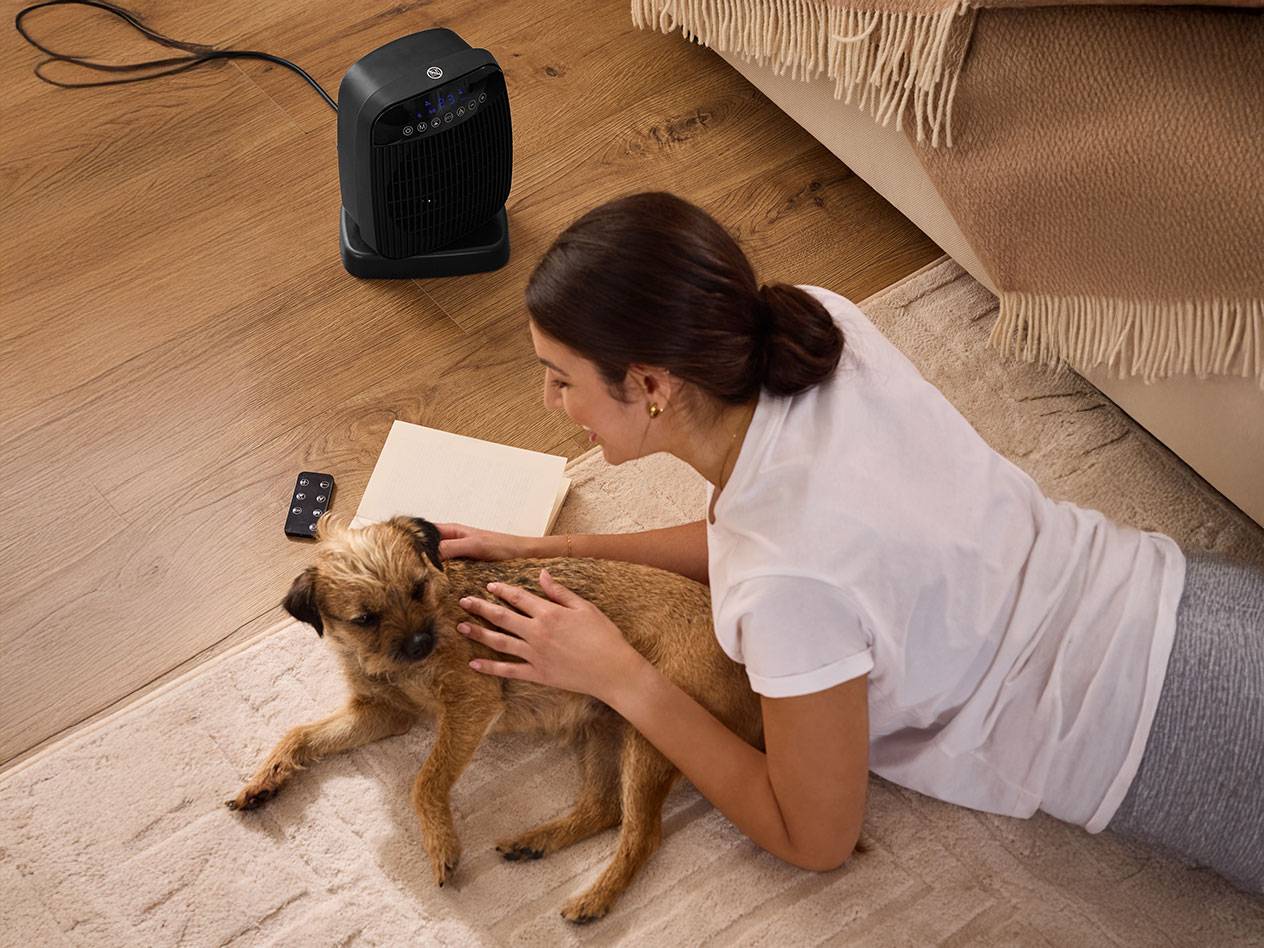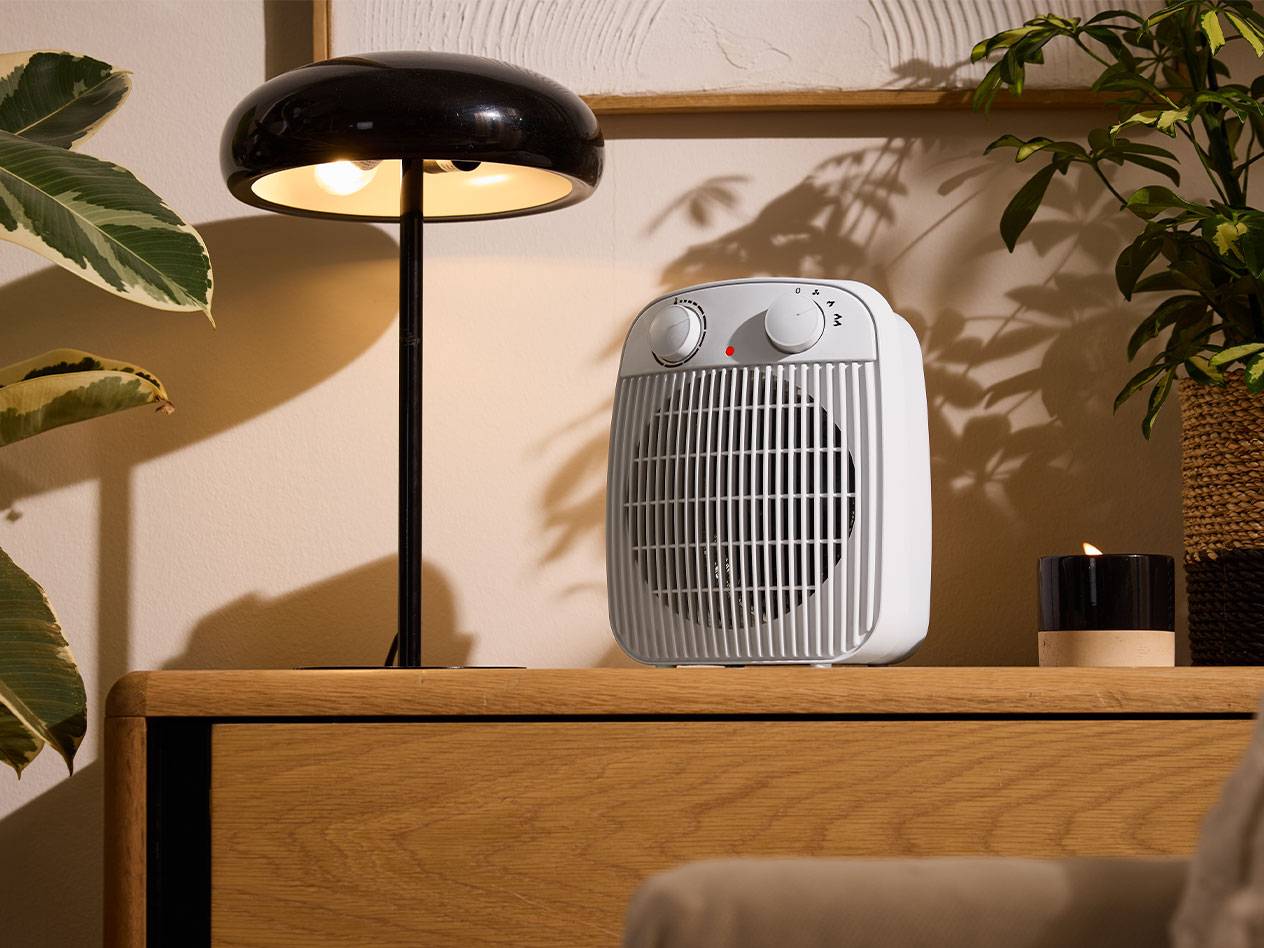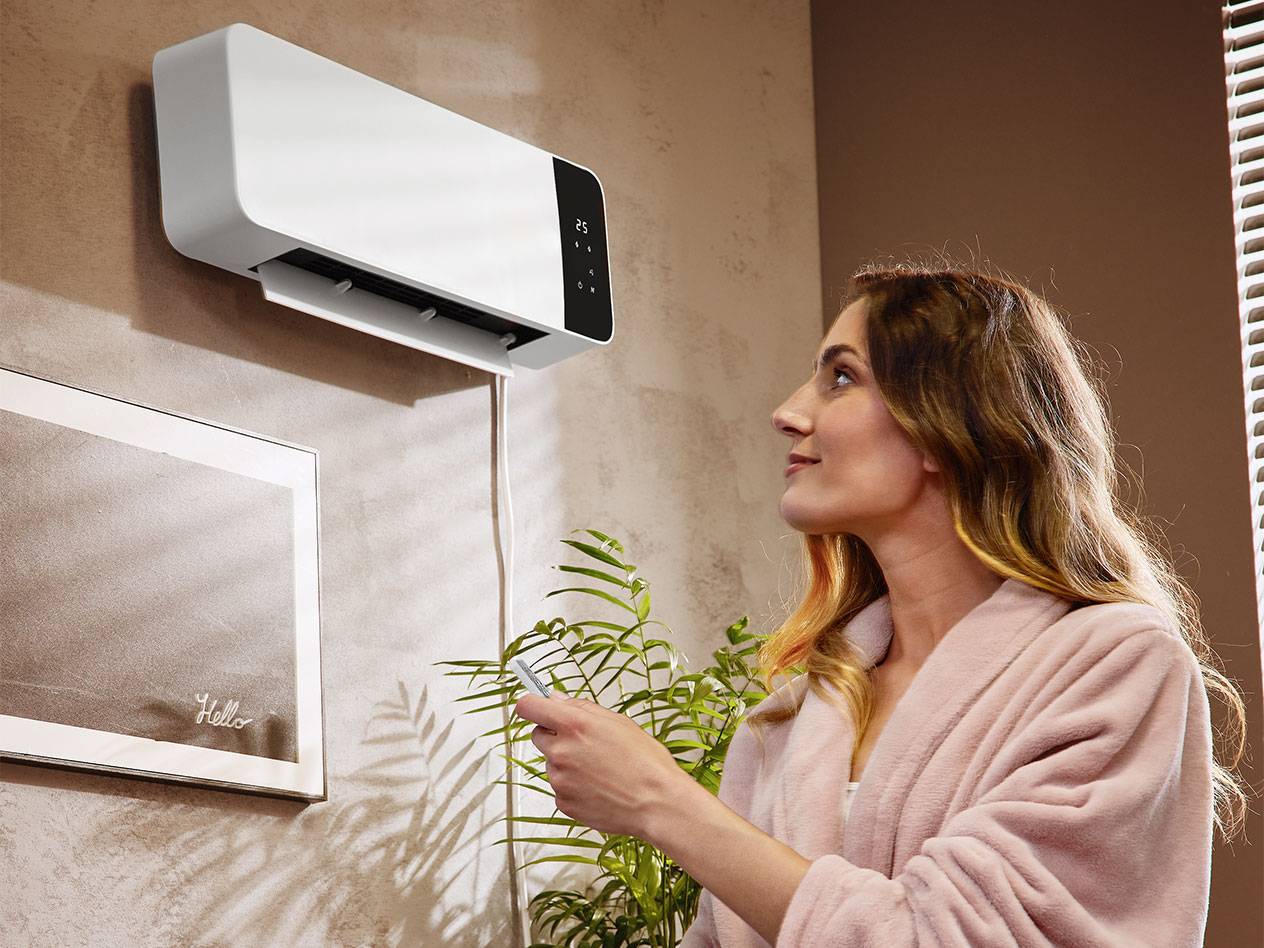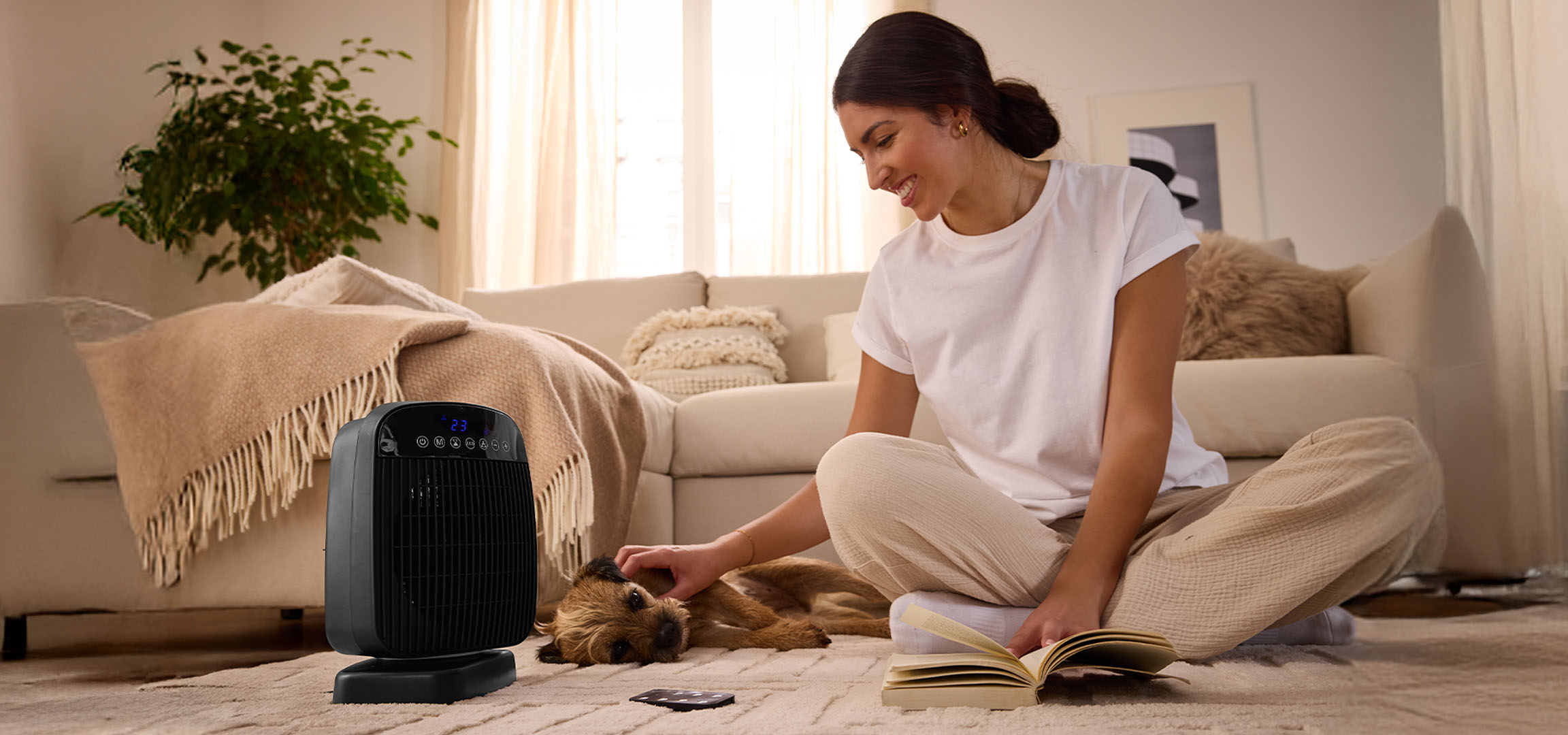Choosing an electric heater
Electric heaters provide fast warmth for rooms, but which heater is best for your home: infrared or convection, mini electric heater or fan heater? We do the research, so you don't have to, revealing tips on the right heating and how to banish the cold economically and efficiently.

Heaters: which model can do what?
There are two main types: fan heaters and radiant heaters. Fan heaters are a mix of heat module and fan. They heat drawn-in air and distribute it around the room via the fan unit. This heating of the air molecules is called convection heat. Because the basic fan technology is built in anyway, you can usually use fan heaters for heating and cooling. Radiant heaters are infrared heaters that emit heat directly. They are available as compact, wall-mounted radiant heaters or as large heating panels. Infrared heat heats objects and people more than the air in a room. This heat is perceived as more intense. Radiator thermostats also belong to the category of heating appliances. They are fitted to a classic radiator and ensure that you can heat properly and efficiently. Their clever programmes switch the heat on at certain times and on certain models can detect open windows.

Fan heaters vs. radiant heaters: pros and cons
Fan heaters and radiant heaters all have the same task. They are designed to warm rooms in which there is no radiator or fireplace; or on particularly cold days, if you want a little extra heat.
Take a look at some of the pros and cons for fan and radiant heaters below.
Convection heat with fan heaters | Infrared heat with radiant heaters |
|---|---|
+ Fast heating | + Direct and pleasant warmth |
+ Cheap and compact | + Heat is retained longer |
+ Flexible & mobile use | + Silent operation |
– Heat is lost more quickly through room air | – Only for local heating |
– Higher power consumption | – Higher power consumption |
– Audible fan | – More expensive than fan heaters |

Heating correctly: what to look out for when buying a heater
When it comes to buying a heater, safety is always a priority. Producing heat comes with obvious risks, which is why every product must have the following safety features:
Automatic switch-off: when the heater reaches a certain temperature, it switches off automatically. Operation is also stopped after a certain period of time. Further switch-off safeguards, for example to prevent tipping, are even better.
Covers: a protective grill in front of the heat source is essential to protect you and your family from injury. However, risks can still occur. That's why you should always place or install heaters out of reach of children.
Protection class: the IP code indicates the rooms and environments in which a heater may be used. This code indicates the protection against dust and water. If a fan heater has the code IP20, it is protected against dust and larger dry particles, but not against water. It may therefore only be used in spaces like the living room, workshop or bedroom. If the device has the IPX4 code, it is protected against splashing water only and may be used with care in bathrooms that are too cold, subject to certain safety precautions.
In addition to safety, heating is of course also about efficiency. Fan heaters should have at least 2,000 watts of power so that the heating element does its job quickly and produces enough heat to keep you cosy. You can use the heating levels to decide whether you need a lot of heat in a short time or just want to treat yourself to a little more cosy comfort in eco mode, and since you want to warm up yourself and not just the room, it should be possible to control the heat flow. With fan heaters, this can be done using adjustable slats; with radiant heaters, usually using an adjustable angle of inclination.

